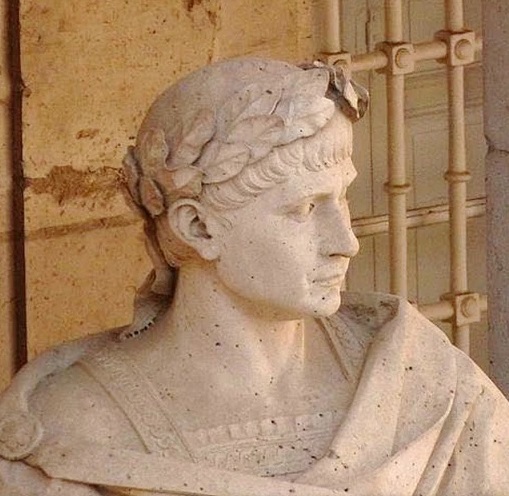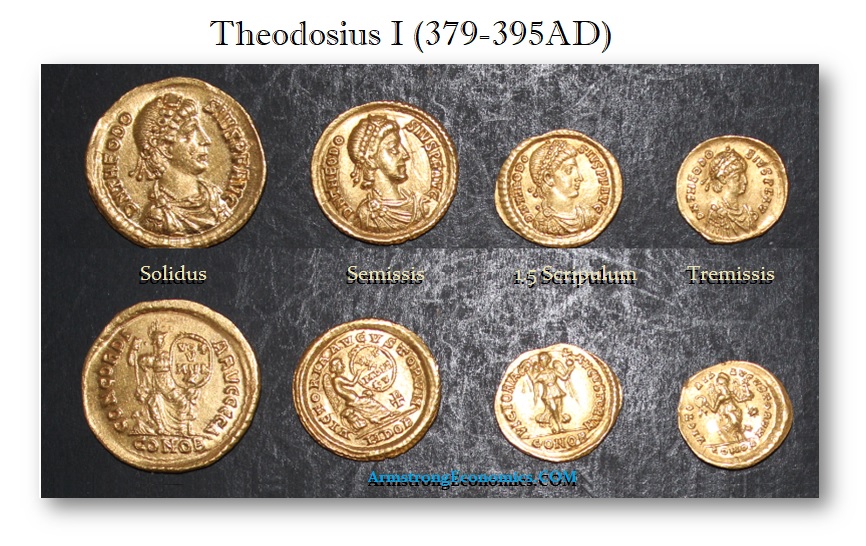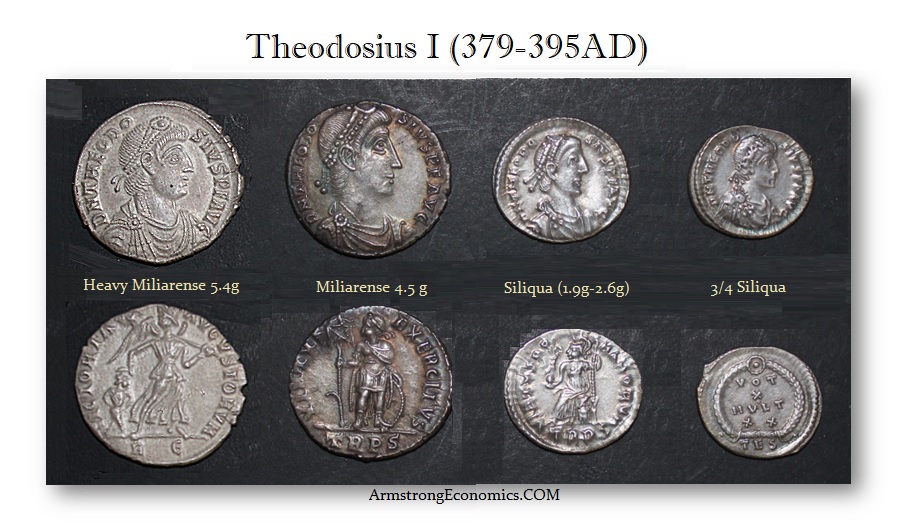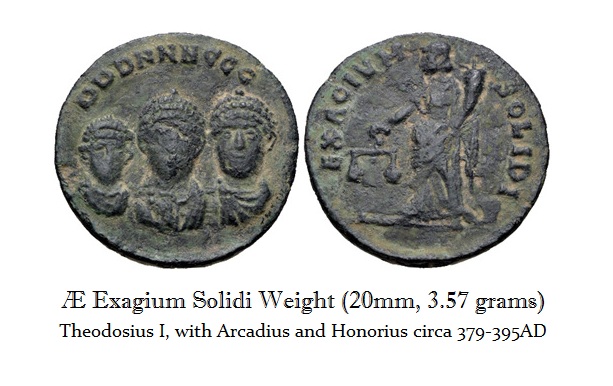Theodosius I the Great
379 – 395 AD
Emperor of the East
Flavius Theodosius was the son of the famous general Count Theodosius. Theodosius served as Governor of Moesia Prima and was a very successful field general defeating the Sarmatians along the Danube. However, his career appeared to be at an end when his famous father was executed in 375 AD for treason. Theodosius retired to his family estate in Spain, where he remained for several years. He was the last emperor who ruled the entire Roman Empire.
In 378 AD, Theodosius was recalled by Emperor Gratian in the wake of the disaster at the battle of Hadrianopolis, where the Emperor of the East, Valens, met his death. Theodosius was thus elevated to the vacant Eastern throne in January 379 AD, about five months after the end of Emperor Valens. Theodosius was given the Danubian frontier, from which he launched major attacks against the Goths (Germanic Tribes).
Finally, in 382 AD, Theodosius came to realize that complete victory over the Goths was impossible. He decided to enter into a truce attempting the same compromise that Marcus Aurelius had once tried and failed. The Goths were given vast territories in Thrace where they were allowed to settle in return for promising their loyalty and to supply the Empire with soldiers when needed. Of course, the territory given to the Goths under Theodosius was significantly more extensive than that of Marcus Aurelius. In the end, Theodosius’ solution brought peace near term, but it would ultimately prove to be a massive mistake for the Empire long-term.
Following the execution of Gratian by the usurper Magnus Maximus in 383 AD, Theodosius found himself the sole legal ruler of the Roman Empire. It was at this time that he raised his son Arcadius to the rank of Augustus and also introduced the first coinage of an Empress for his wife, Aelia Flaccilla. When Magnus invaded Italy in 387 AD in hopes of taking Rome and the throne of the Western provinces for himself, Theodosius raised an army from among the barbarian tribes and headed West. The two armies met at Aquileia, where Magnus was defeated and subsequently beheaded.
In 390 AD, Theodosius was actually excommunicated from the church for massacring 7,000 citizens in Thessalonica for civil disorder. He was ordered to do public penance, which he completed. In 391 AD, Theodosius issued the edict of forced Christianity, whereby all pagan temples were closed throughout the Empire.
Following the death of Emperor Valentinian II in 392 AD, half-brother of Gratian, Arbogast, was the caretaker and real power behind the throne of Valentinian II, elevated the schoolteacher Eugenius to the throne in the West. This left Theodosius with little choice but to march against the West once again.
In 394 AD, the West was again subdued at the battle of Frigidus, thus unifying the Empire once again. However, this unity would prove to be a brief shining moment in the journals of history, for Theodosius died at Mediolanum (Milan) in January 395 AD. His two sons, Arcadius and Honorius, succeeded him, and the Empire was split between them. Under his son Honorius, the Goths would capture Rome itself.
Monetary System
Mints: Alexandria, Antioch, Arelate, Aquileia, Constantinople, Cyzicus, Heraclea, London, Lugdunum, Milan, Nicomedia, Rome, Siscia, Sirmium, Thessalonica
Obverse Legends:
D N THEODOSIVS P F AVG
Monetary Reform
Theodosius introduced a new denomination in gold equivalent to one-third of a solidus (9 siliquae) known as the “tremissis” with an average weight of 1.51 grams, replacing the 1½ scripulum.

Constantine introduced the miliarense as part of his currency reforms. It was called the miliarense (from the Latin miliarensis (meaning “of a thousand”) because a thousand of these coins roughly equaled the value of a pound of gold. This unit of account often expressed large sums, such as government officials’ salaries. There were two versions: a “light” miliarense struck at 72 to the pound and a “heavy” 60 to the pound. One gold solidus was worth 14 heavies or 18 lights.
DENOMINATIONS
AU Solidus (4.50 grams)
AU Semissis (2.25 grams) – possibly unique
AU 1½ Scripulum (1.65 grams)
AU Tremissis (1.45 grams)
AR 3 Miliarense (13.50 grams)
AR Miliarense (4.50 grams)
AR Reduced Siliqua (2.25 grams)
AR ¾ Siliqua (1.70 grams)
AR ½ Siliqua (1.12 grams)
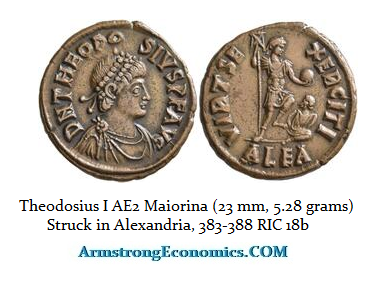
AE1(restored follis)(28mm) Quite Rare
AE2 Maiorona (23mm 5.28 grams)
AE3
AE4


